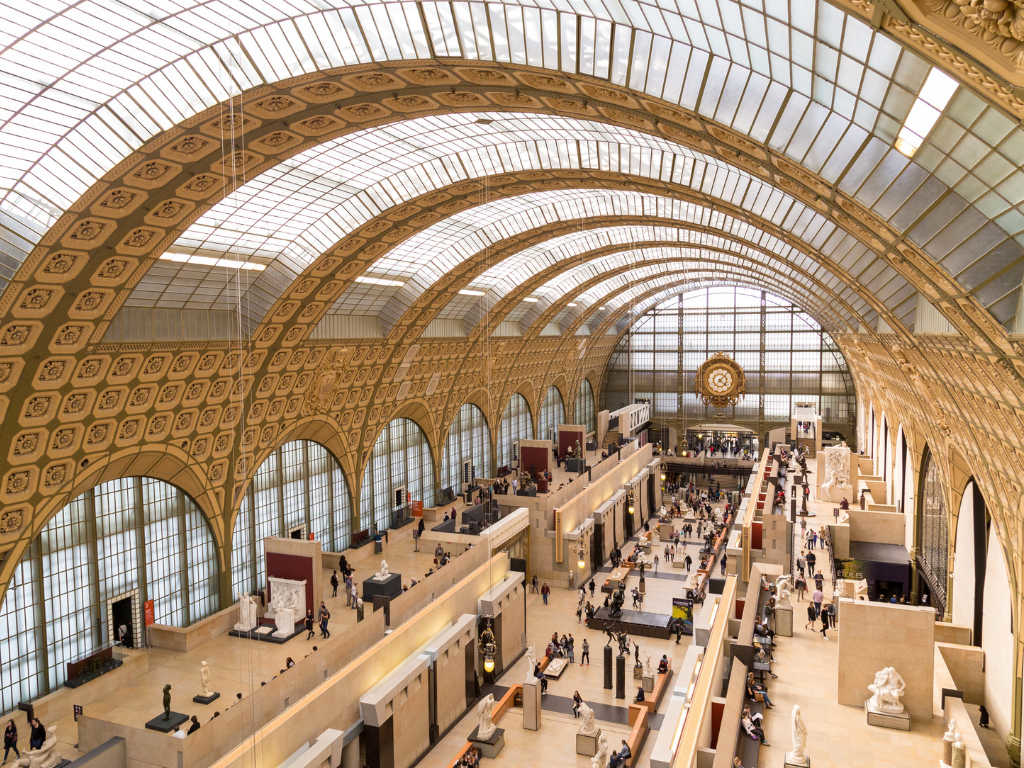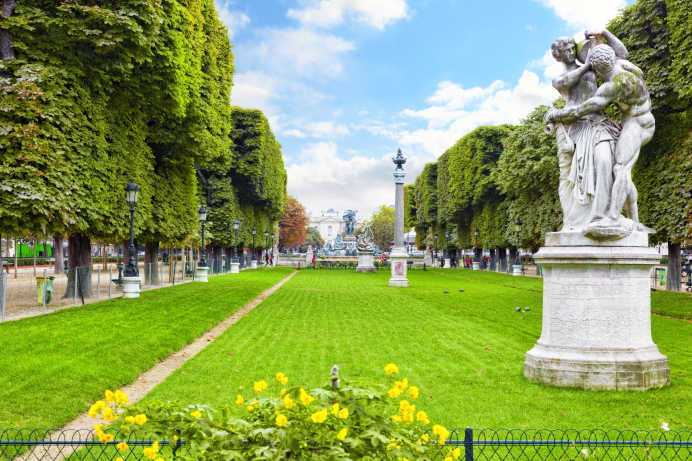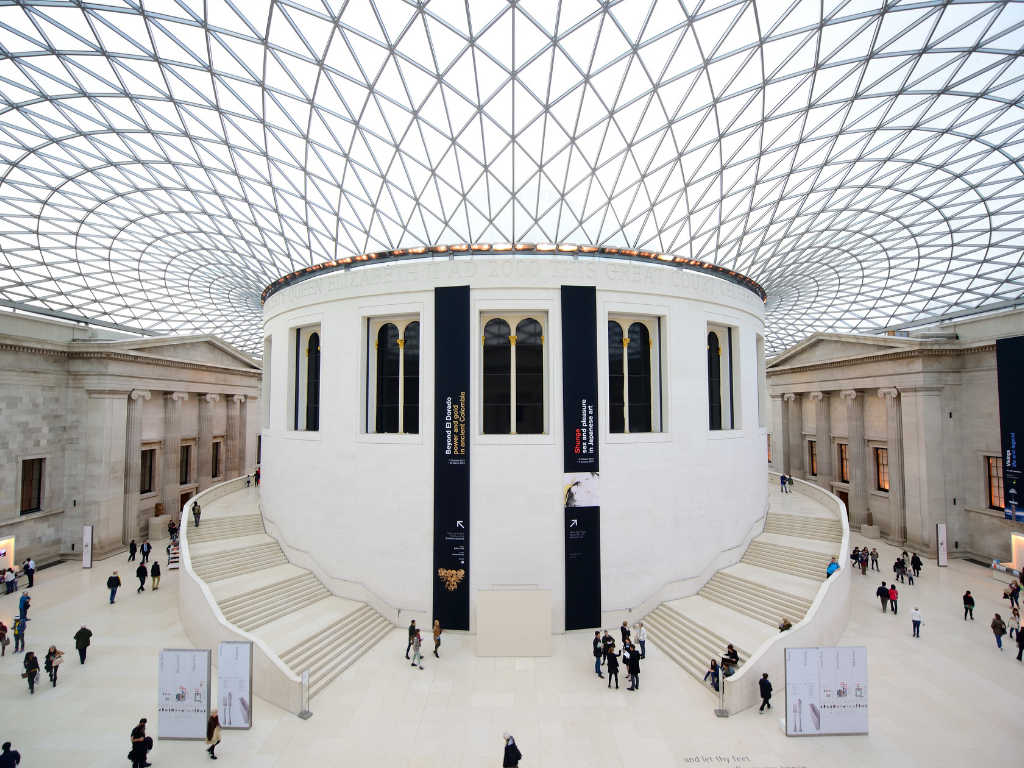Loving the Louvre in Paris is easy, it’s like the smash hit single that never disappoints no matter how many times we listen. If we flip to the B side and walk across the Seine, in the shadow of the Tuileries, we fall in love with our next favorite art jam, the Musee d’Orsay. Housed in a former beaux-arts train station, the opulent structure provides a perfect backdrop for viewing an extensive collection of French masters. When we visit the Musée d’Orsay, we often catch ourselves saying, “I can’t believe all of these paintings are in one place.” On display are some of the world’s most famous works from 1848 to the early twentieth century including the Realist, Impressionist, and Post-Impressionist movements, by the likes of Van Gogh, Courbet, Monet, Manet, Degas, Seurat, and Matisse.
Our walking tours of the Orsay museum, led by credentialed art historians, offer an in-depth, immersive look at the world-class collection in a dynamic and digestible manner. Below you’ll find details of our walking tours as well as insider tips to help you prepare for your visit to the Orsay museum.
PLANNING YOUR VISIT TO THE ORSAY
When to visit the Musée d’Orsay?
We find the best time to visit the Musée d’Orsay is during the once per week evening opening hours. The Orsay hours are normally Wednesday to Sunday, 9:30 am to 6:00 pm, however, on Thursdays, the museum remains open until 9:45 pm (last admission is at 9:00 pm). Visiting in the evening practically guarantees diminished crowds, which means shorter entrance lines and the space in which to tranquilly take in the art.
The busiest times to visit the museum are Sundays and Tuesdays. The Orsay is closed on Mondays. We recommend purchasing tickets prior to your visit so that you can avoid long ticket lines. We provide skip-the-line Musee d’Orsay tickets on all of our tours.
How do I find the Orsay?
The Orsay is located on the Left Bank. The nearest métro stops are Solférino or Assemblée Nationale on line 12, or *Musée d’Orsay* on the RER B. The meeting point for our Orsay tour is just nearby—you’ll receive these details in your confirmation text.
Do you have a recommendation for lunch after our visit?
The Orsay has a number of dining options in-house, ranging from the very casual to the more formal. If you’re interested in dining in the surrounding neighborhood, it’s best to avoid the restaurants just facing the museum as these tend to cater to tourists (and have inflated prices).
Is the Orsay wheelchair accessible?
The museum is accessible. There are elevators throughout and, if you visit the Musée d’Orsay on your own, you can print a wheelchair accessibility guide from the museum website.
VISITING THE MUSÉE d’ORSAY: AN INSIDER TIP
Most visitors to the Orsay museum make a beeline for the Impressionist halls. Though they are absolutely not to be missed, the halls can be very crowded depending on the time of day.
Instead of starting there, head to the Salle des Fêtes, which, according to Context docent and historian Pablo Vazquez-Gestal, is a "very bombastic Third-Republic . . . flamboyant room . . . with a great view of the Seine. It is usually empty, but gives you the idea of Paris as the capital of the opulent, decadent fin-de-siècle and also provides a sheer contrast with the art that is just next door.”

TOUR THE ORSAY WITH CONTEXT
Musée d’Orsay Tour with Skip the Line Tickets is a stimulating introduction to French painting and sculpture of the latter half of the nineteenth century. Whether you are new to the collection or visiting for the umpteenth time, viewing the collection from the perspective of a credentialed art historian is an enriching experience for the intellectually curious.
If booked privately, we may be able to design a tour to focus on one particular movement or even the current temporary exhibition.
Musée d’Orsay for Kids is our family-friendly, child-oriented introduction to the museum led by art historians specially-trained in working children and teaches our youngest spectators not only about the art movements of the late nineteenth century but also how to “read” and appreciate art.

ORSAY TIMELINE
16th century – The site of the museum was part of a garden belonging to Queen Marguerite de Valois
17th century – The site is divided into lots upon which private mansions are constructed
1708 – Construction of the Quai d’Orsay begins
1782 – Construction begins on the Hôtel de Salm (today the Musée de la Légion d’honneur), across from the museum
1810 – Construction begins on the Palais d’Orsay, on the current site of the museum
1871 – The Palais d’Orsay is burned to the ground during the Paris Commune
1898 – Construction begins on the train station, Gare d’Orsay, finishing in time for the 1900 World’s Fair. The Gare d’Orsay was the head of the southwestern French railroad network
1939 – The site ceases to be used as a train station (as electricity grew in popularity and trains became longer, the Orsay station’s short platforms were rendered unusable)
WWII period – Building is used as a mailing center
1977 – It is decided that the Musée d’Orsay should occupy the former Gare d’Orsay
1978 – The building is classified as a historical monument
1986 – The Musée d’Orsay opens to the general public
ADDITIONAL READING
Impressionism: Origins, Practice, Reception – Belinda Thomson
The Painter of Modern Life and Other Essays – Charles Baudelaire
The Letters of Vincent van Gogh – Vincent van Gogh
Lire la peinture de Cézanne – Laure-Caroline Semmer [in French]
Les oeuvres-clés de l’Impressionnisme – Laure-Caroline Semmer [in French]

ADDITIONAL PLACES TO VISIT IN PARIS
Saint-Germain-des-Prés and the Latin Quarter – These two neighborhoods on the Left Bank (in French: Rive Gauche), a mere 15-20 walk from the museum, are steeped in history and worth concerted exploration. Our Rive Gauche Stroll provides a historical overview of the area.
Luxembourg Garden – The expansive, tree-lined Jardin du Luxembourg is located in the 6th arrondissement, not far from the Musée d’Orsay. It was designed in the 17th-century for Marie de’ Medici, meant to flank her newly-constructed Luxembourg palace.
Musée Marmottan – A small museum in the 16th arrondissement of Paris, formerly a private mansion, how houses a diverse collection of Impressionist pieces including the world’s largest collection of work by painter Claude Monet. Those interested in exploring the museum and learning more about Impressionism will most certainly enjoy our online seminars with art historian Timea Andrea Lelik, who has an extensive knowledge on important figures and eras.
Montmartre Walking Tour – This quaint neighborhood in the northernmost arrondissement of Paris was once a center for bohemian culture in the era of the Impressionists. Indeed, Renoir’s masterpiece Bal du moulin de la Galette was painted at a private club next to one of the area’s famed windmills, which itself is still standing. Context offers a seminar on the history of the Montmartre area.
Giverny – Visitors enchanted by the en plein air work of Monet may enjoy an excursion to the gardens where he produced much of his later work. An easy train ride out of town, a visit to the Monet Foundation in the tiny Norman village of Giverny makes for an enjoyable half-day.
WATCH ART HISTORY COME ALIVE ONLINE
If you can't make it in-person with us, come join us online to learn more about your favorite topics in art history. From hidden masterpieces in the most celebrated museums to the lives of legendary artists, Context seminars and courses bring renowned collections to you, wherever you are.













